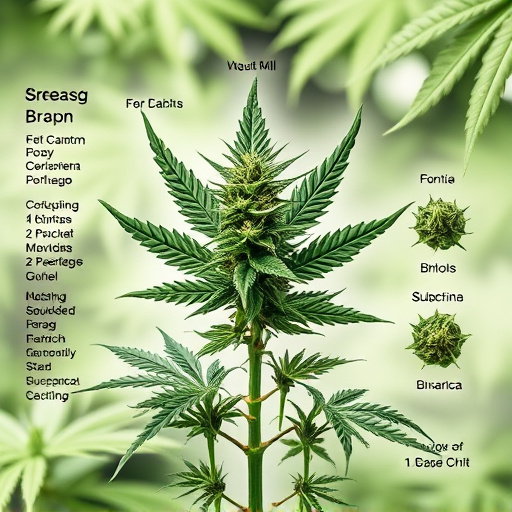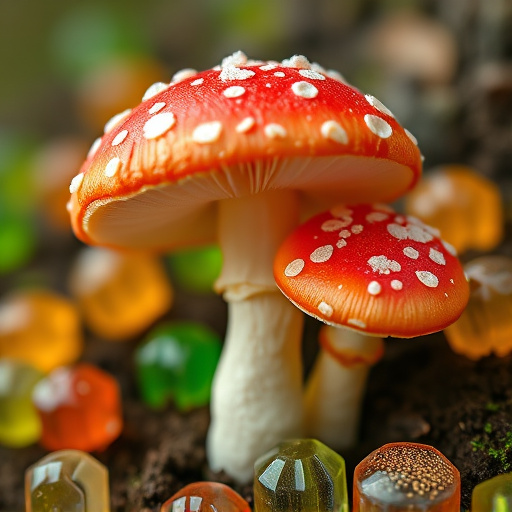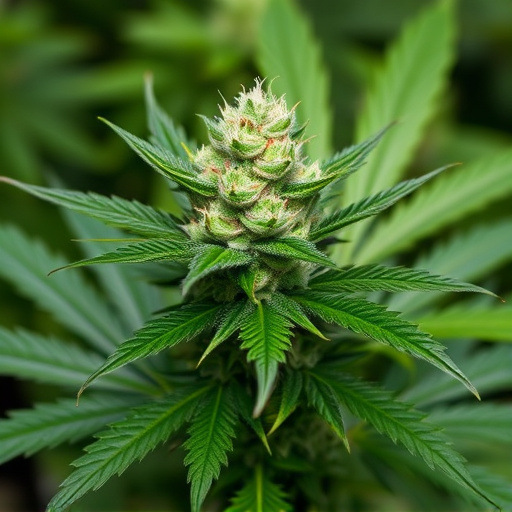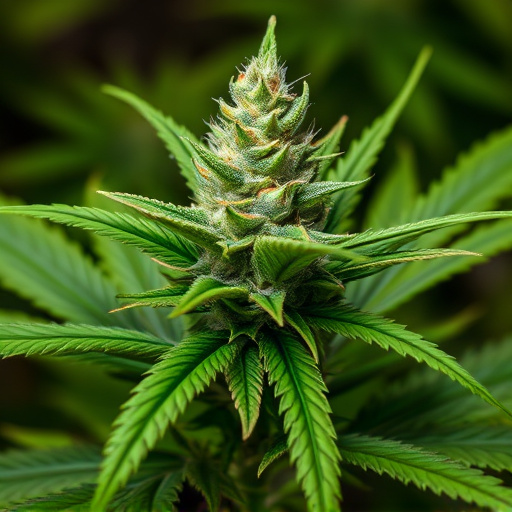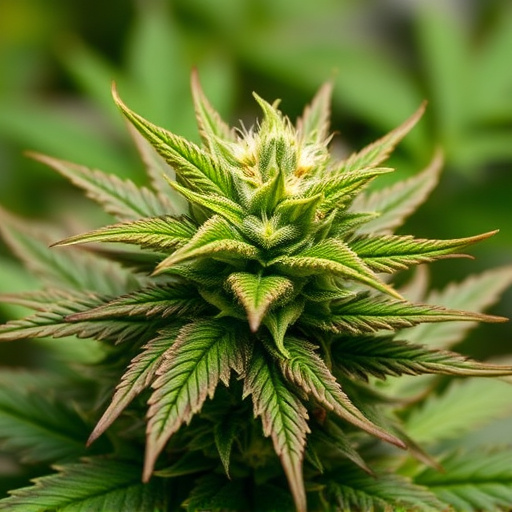The unique properties of cannabis strains, including potency and effects, are determined by their genetic makeup and terpene profiles. Cannabinoids like THC and CBD, responsible for sensations and therapeutic benefits, vary between strains. Terpenes, aromatic compounds that modulate cannabinoid effects, also play a significant role. Understanding these components helps users select strains for desired outcomes. Environmental factors, such as soil quality, climate, and sunlight exposure (terroir), influence cannabis plant profiles, particularly THC levels, which dictate potency. Individual biological variations and tolerance levels affect cannabis experiences. Personalization through consumption methods like edibles, vaporizers, or smoking, combined with starting low doses and increasing gradually, ensures a comfortable and controlled experience when exploring the most potent cannabis strains.
Uncover the multifaceted world of cannabis effects, where various factors intertwine to create unique experiences. From genetic composition and terpene profiles that determine a strain’s potency, to environmental conditions shaping its overall characteristics, this article explores the intricate dance between nature and biology. Discover how individual tolerance and personal preferences further personalize cannabis consumption, guiding users towards the most potent strains for their needs.
- Genetic Composition and Terpene Profiles: Unlocking the Potency of Cannabis Strains
- Environmental Factors: How Terra and Climate Shape Cannabis Effects
- Individual Biology and Tolerance: Personalizing Cannabis Consumption
Genetic Composition and Terpene Profiles: Unlocking the Potency of Cannabis Strains
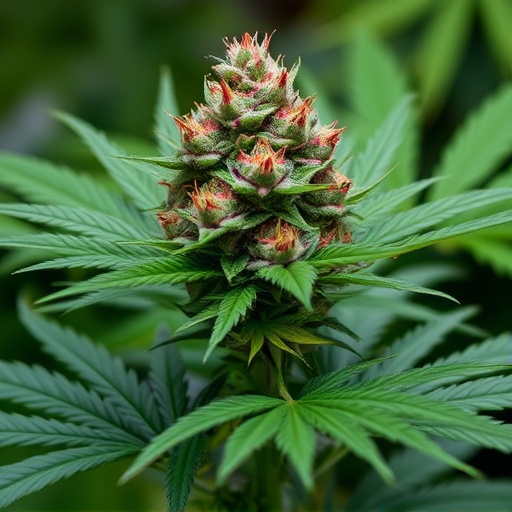
The genetic composition and terpene profiles of cannabis plants play a pivotal role in determining the potency and unique effects of different strains. Each strain boasts its own distinct combination of cannabinoids, such as THC and CBD, which are responsible for producing specific sensations and therapeutic benefits. Beyond cannabinoids, terpenes—aromatic compounds produced by the plant—significantly influence the overall experience. These terpenes not only contribute to the characteristic scents and flavors but also interact with cannabinoids, enhancing or moderating their effects.
Understanding these chemical components allows enthusiasts and medical users to choose strains that align with their desired outcomes. Certain terpene profiles are linked to heightened potency and intense experiences, making them popular among those seeking the most potent cannabis strains. By studying genetic composition and terpene interactions, researchers can further optimize cannabis breeding programs, leading to even more powerful and tailored varieties for various applications.
Environmental Factors: How Terra and Climate Shape Cannabis Effects
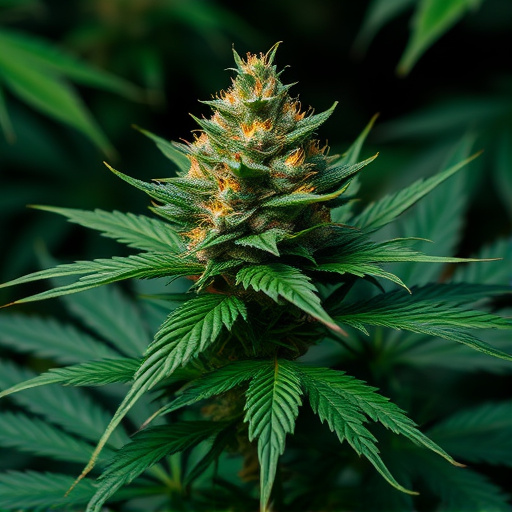
The environment in which cannabis plants are grown plays a significant role in shaping their effects. Terroir, a term that describes the unique interaction between a plant and its surroundings, heavily influences the chemical composition of cannabis. Factors like soil quality, climate, and sunlight exposure contribute to variations in cannabinoid profiles, particularly the levels of THC (tetrahydrocannabinol), often considered the most potent cannabis strain component responsible for its psychoactive effects.
For instance, cannabis plants grown in regions with diverse microclimates may exhibit different cannabinoid concentrations. Warmer temperatures generally encourage higher THC levels, while cooler climates can result in more balanced profiles or an increase in CBD (cannabidiol). These environmental factors contribute to the diversity of cannabis strains, some renowned for their potent THC content, making them sought after by users looking for intense effects.
Individual Biology and Tolerance: Personalizing Cannabis Consumption

Cannabis consumption is a deeply personalized experience, and understanding individual biology and tolerance is key to maximizing its effects. Everyone’s body processes cannabis differently due to genetic variations in cannabinoid receptors and metabolizing enzymes. These factors influence how quickly and intensely one feels the high, as well as the duration of effects.
Knowing your tolerance level is crucial when selecting from the most potent cannabis strains. Starting with lower doses and gradually increasing allows individuals to gauge their sensitivity, ensuring a comfortable and controllable experience. Personalization also extends to preferred consumption methods—edibles, vaporizers, or smoking—as different routes of administration can lead to varying effects based on how quickly cannabinoids enter the bloodstream.
Cannabis effects are a complex interplay of genetic composition, environmental factors, and individual biology. Understanding these influences allows for a more personalized approach to cannabis consumption, helping users navigate the market for the most potent cannabis strains while considering both their unique needs and preferences. By exploring the intricate details of terpene profiles, environmental conditions, and individual tolerances, consumers can unlock the full potential of this versatile plant.

